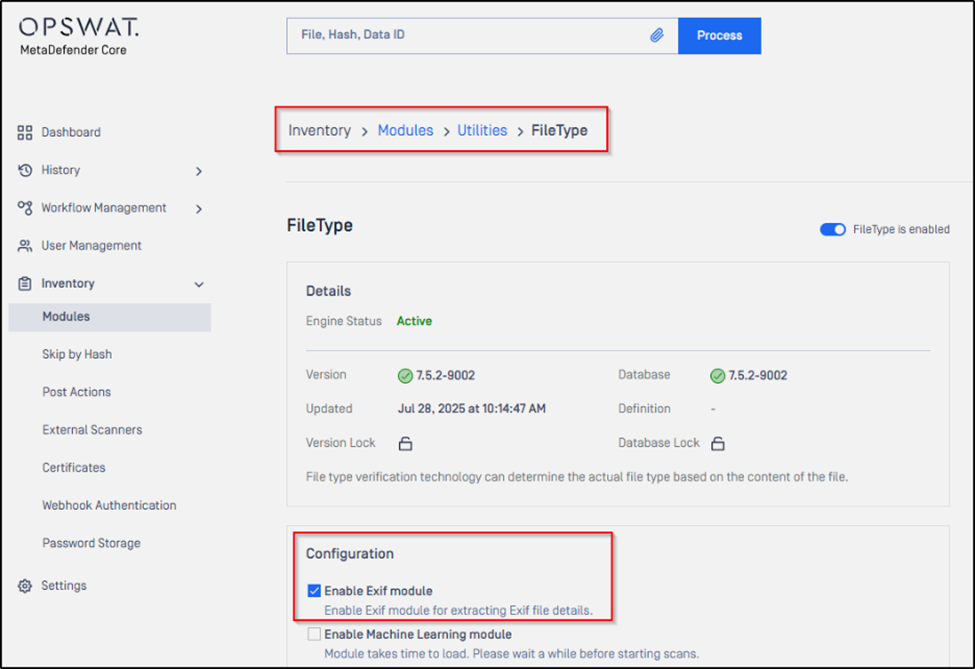Overview
When the Exif feature is enabled in MetaDefender Core’s Filetype engine settings, customers may notice the presence of the executable exiftoolwin.exe under the Core resource directory (e.g., data\resources\filetype 15_windows_<ID>\exif_cache_<ID>).

This file may be flagged by certain antivirus engines as a potential threat due to its unsigned status and self-extracting behavior.
This article explains why exiftool_win.exe exists, how it behaves, and what can be done to manage false positive detections.
Why Is exiftool_win.exe Present?
exiftool_win.exe is a third-party utility integrated into MetaDefender Core to extract metadata from files. It is a core component of the Exif processing functionality.
Tool Origin: ExifTool is an open-source utility developed by Phil Harvey, widely used for reading and writing metadata.
Windows Packaging: On Windows, ExifTool is distributed as a self-extracting Perl executable. When run:
It extracts embedded Perl scripts to a temporary folder.
This temporary location is defined during engine initialization by MetaDefender Core.
Example of the folder path:
C:\Program Files\OPSWAT\MetaDefender Core\data\resources\filetype_15_windows_\exif_cache_
Why Is It Flagged by Antivirus Software?
Some antivirus (AV) engines may detect exiftool_win.exe as malicious for the following reasons:
It is not digitally signed – some AVs treat unsigned executables as suspicious.
Heuristic detection – the self-extraction behavior is commonly seen in malicious droppers or downloaders.
False positive patterns – occasionally, the hash or behavior matches known malware patterns erroneously.
Example:
A customer reported detection as TrojanDownloader.Banload.btij by two AV engines on VirusTotal.
Hash of the file in question:
SHA256: 190fa21bca88e2c4ac0ebea467be79f2fda63ccd45915d72a2582ca30a3c7c67
What Can Be Done About It?
✅ Recommended Actions:
Report False Positives:
- Report the detection to the affected AV vendors.
- One vendor (Zillya) confirmed it as a false positive and resolved it in a database update.
Allowlist MetaDefender Core Folder:
- If real-time protection (RTP) is enabled on the server, we recommend allowlisting the entire MetaDefender Core installation directory, e.g.:
C:\Program Files\OPSWAT\MetaDefender Core\
- Monitor & Communicate:
- This behavior is expected and known. Inform customers and security teams as necessary.
- Refer them to this article or similar documentation to clarify the usage and behavior of the file.

